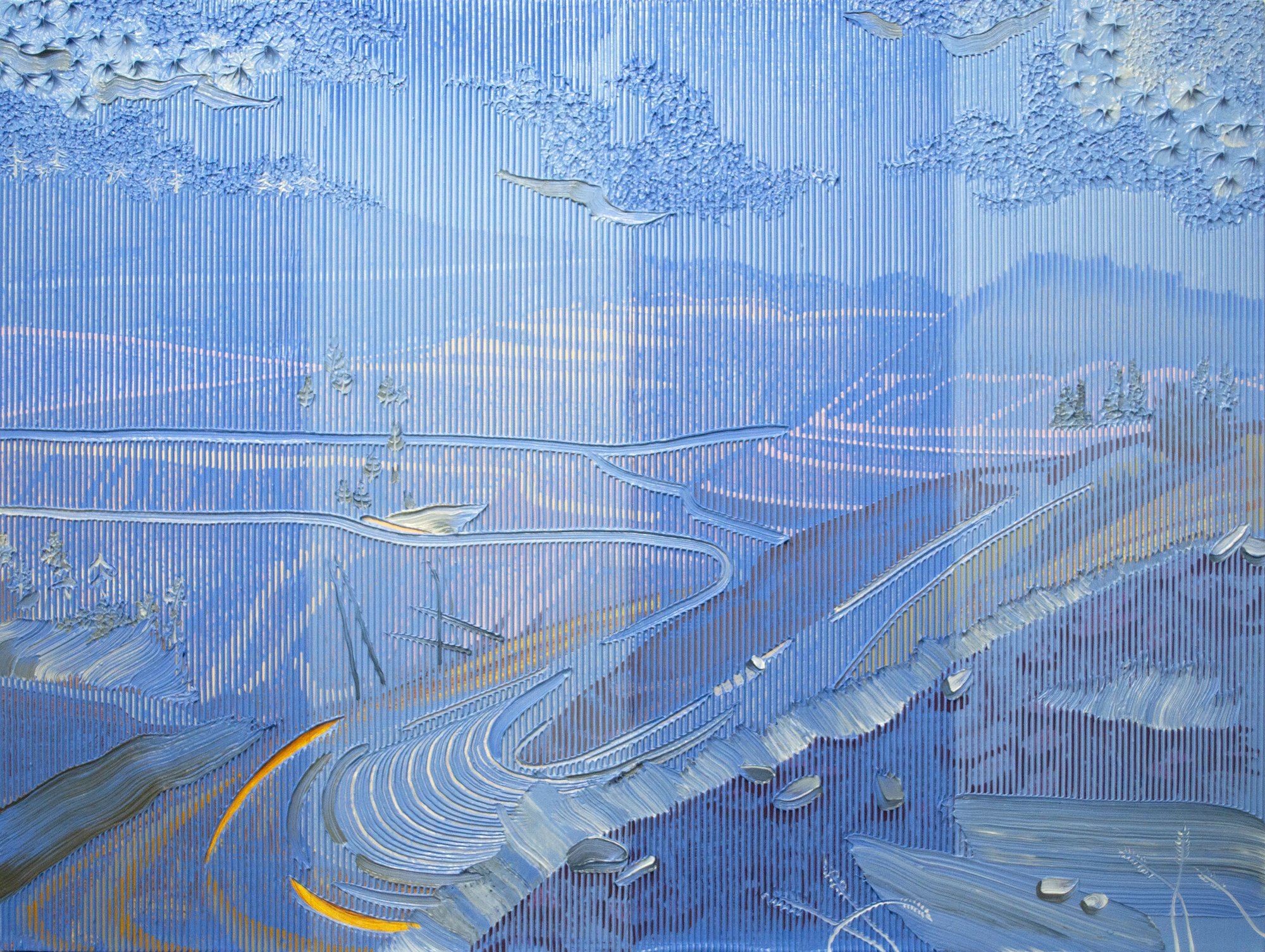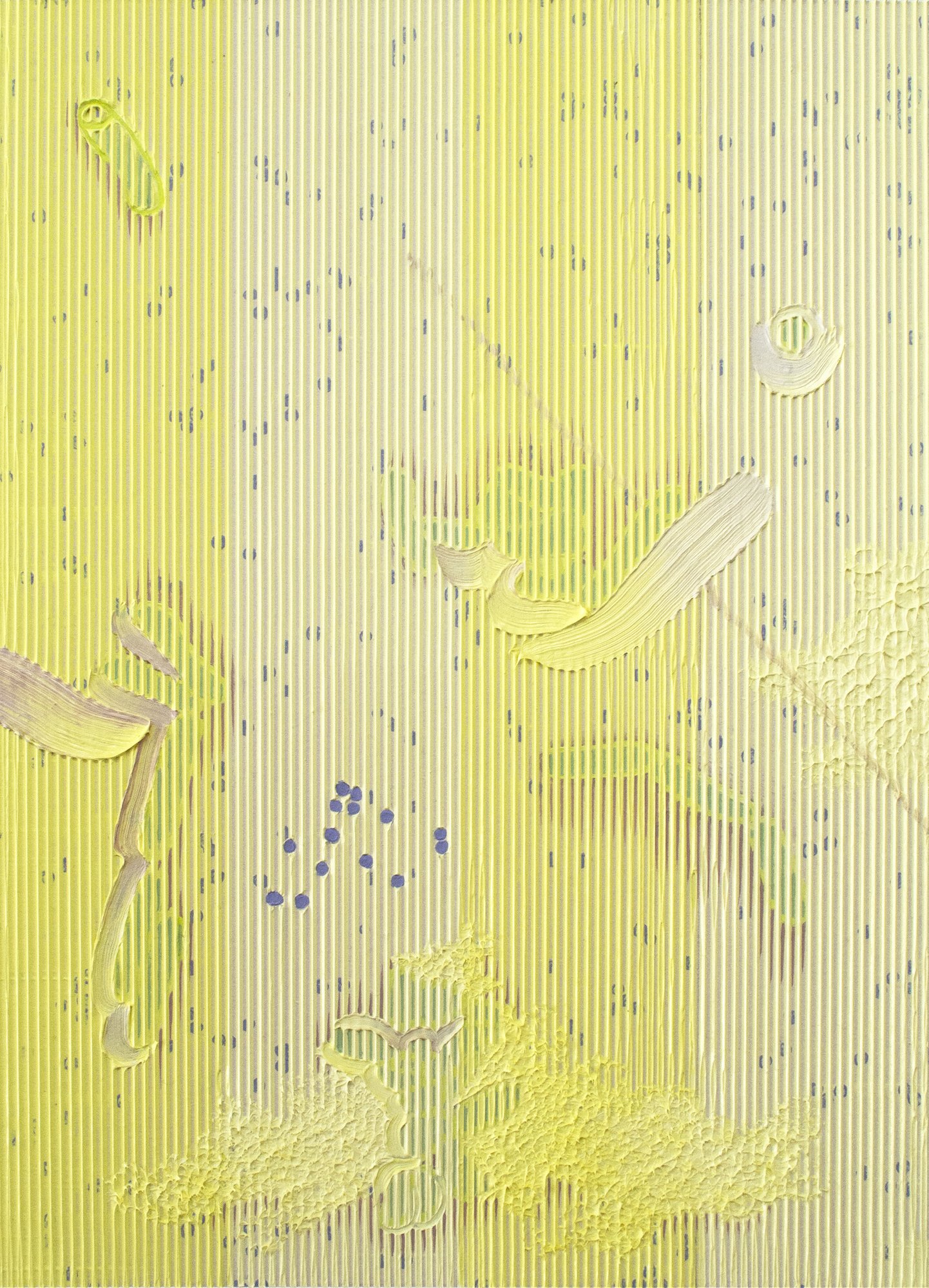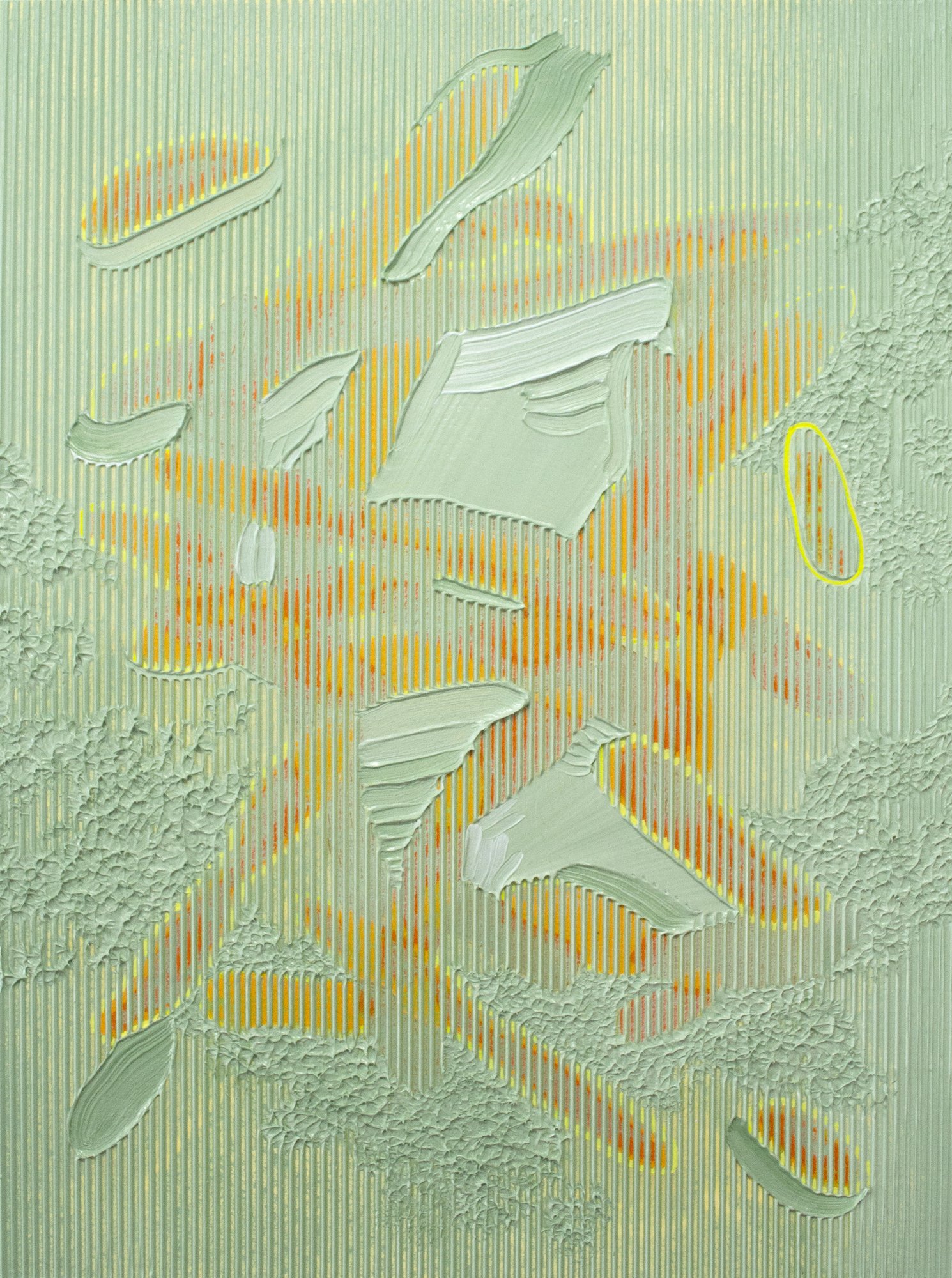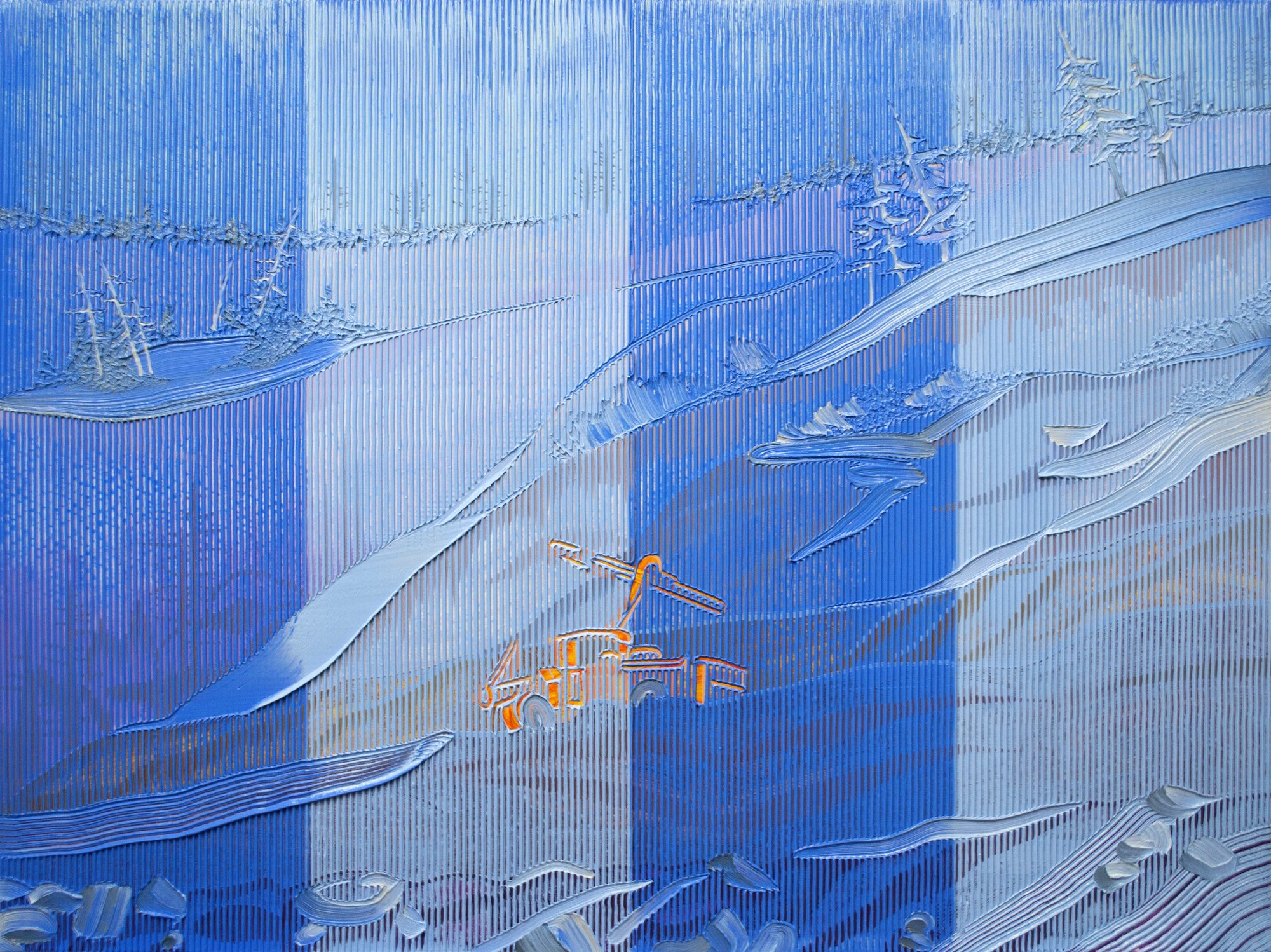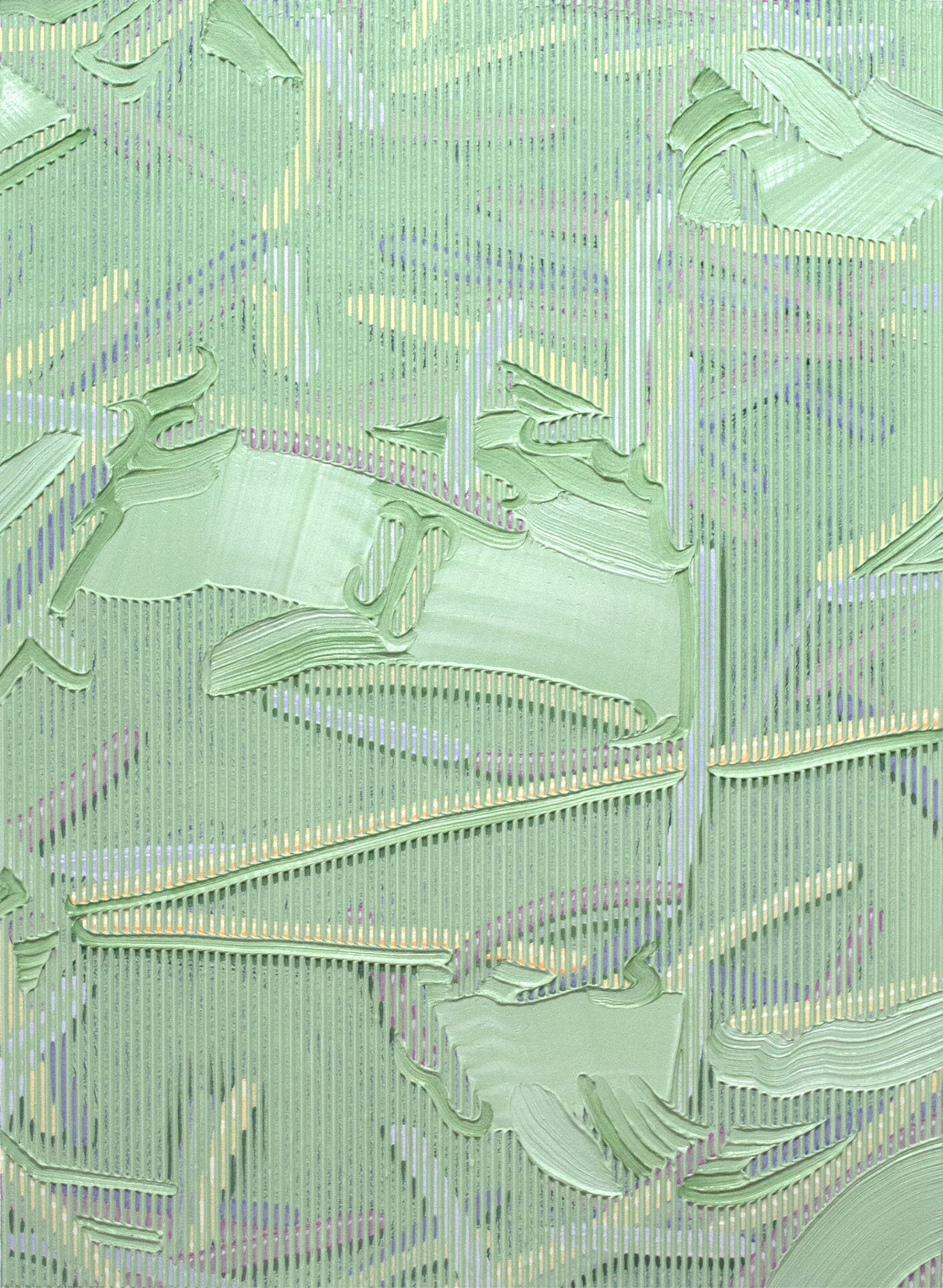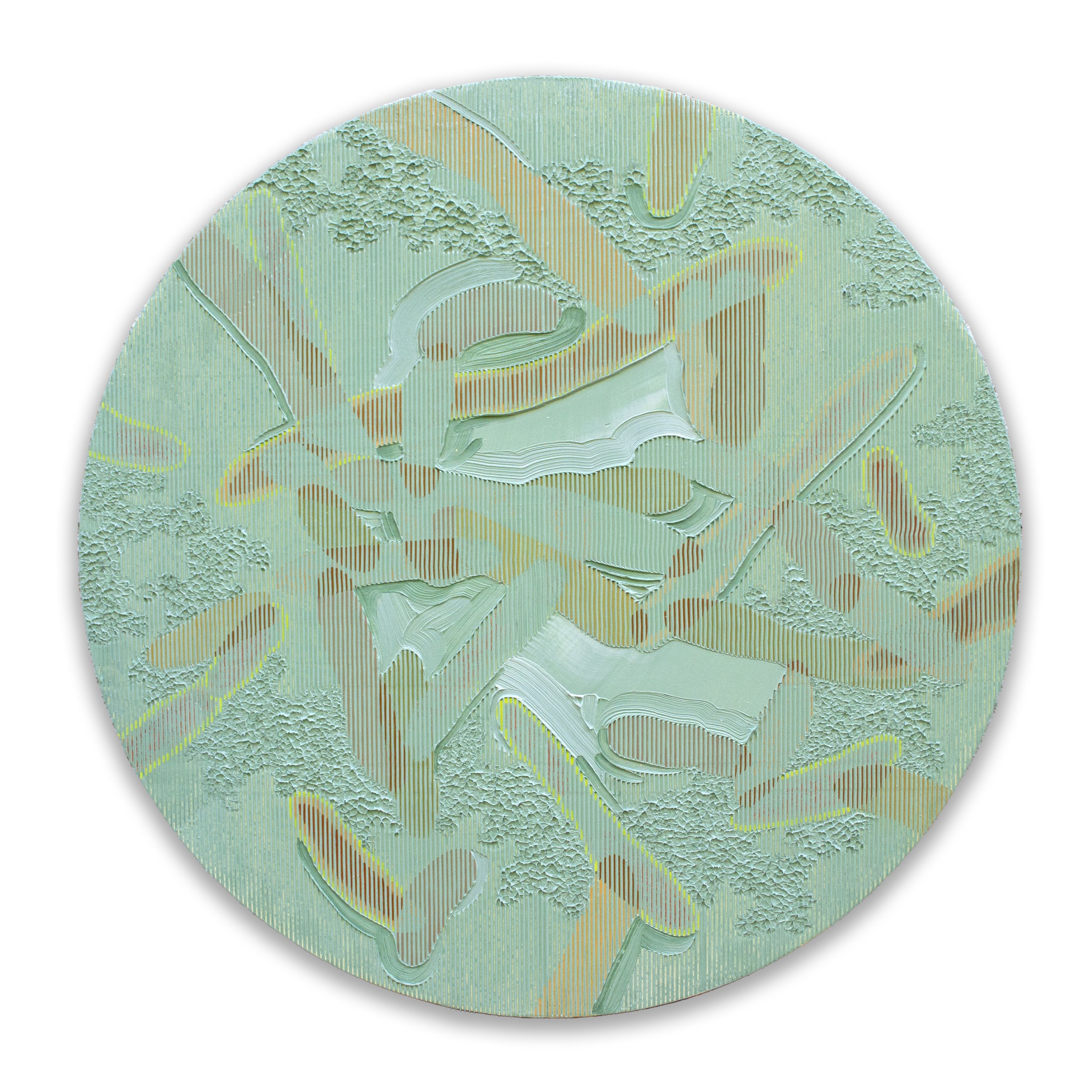Digging in the Ground: The Paradox of Extraction
2023
My oil paintings explore the complex relationship between extractive mining practices and environmental remediation in our transition to green energy. By painting toxic mining landscapes using the very minerals being extracted, I create a visual dialogue between artistic medium and environmental subject.
The paradox at the heart of our green energy revolution is that it demands intensive extraction of minerals like lithium, cobalt, and copper—processes that devastate ecosystems, contaminate watersheds, and often displace Indigenous communities. My work confronts this tension: the very elements that promise to liberate us from fossil fuels first require destructive extraction that leaves poisoned landscapes in their wake. However, nature offers extraordinary solutions through bioremediation. The bacterial microorganisms depicted in my paintings—including Arthrobacter nicotianae, Brevibacterium helovolum, and Bacillus sphaericus—can accumulate, transform, and neutralize toxic heavy metals in soil and water. The pigments in my palette—cobalt blue, cadmium yellow, chromium oxide —directly connect traditional painting materials to contemporary extraction sites. Each brushstroke contains the very substances being mined, creating a material connection between artistic practice and environmental impact. This connection is not merely conceptual; it is chemical and physical.
My paintings of open pit mines function as both documentation and metaphor. Rendered in vibrant mineral pigments, these scarred landscapes become eerily beautiful, forcing viewers to confront the aesthetic allure of environmental destruction through the process of scraping, an extraction process that mirrors mining practices. The bacteria paintings suggest invisible processes of healing and transformation occurring beneath the surface.
This body of work questions whether technological progress must come at the expense of sacred lands and pristine environments. The Thacker Pass lithium mine in Nevada raises questions about sovereignty and sacredness when Indigenous communities view the land as "a corridor to God inhabited by holy spirits" while mining companies see only valuable resources. Through these paintings, I explore whether true sustainability is possible—whether we can extract what we need while developing methods to heal what we damage. The bacterial remediation techniques highlighted in my work suggest a potential path forward: not abandoning technology, but embracing biological solutions that work in concert with natural processes. This series ultimately asks: In our rush toward a green future, can we learn to value remediation as much as extraction? Can we see the microscopic healers of the earth as essential collaborators? And can we recognize that the materials of art, industry, and life are bound together in cycles of use, damage, and renewal?
